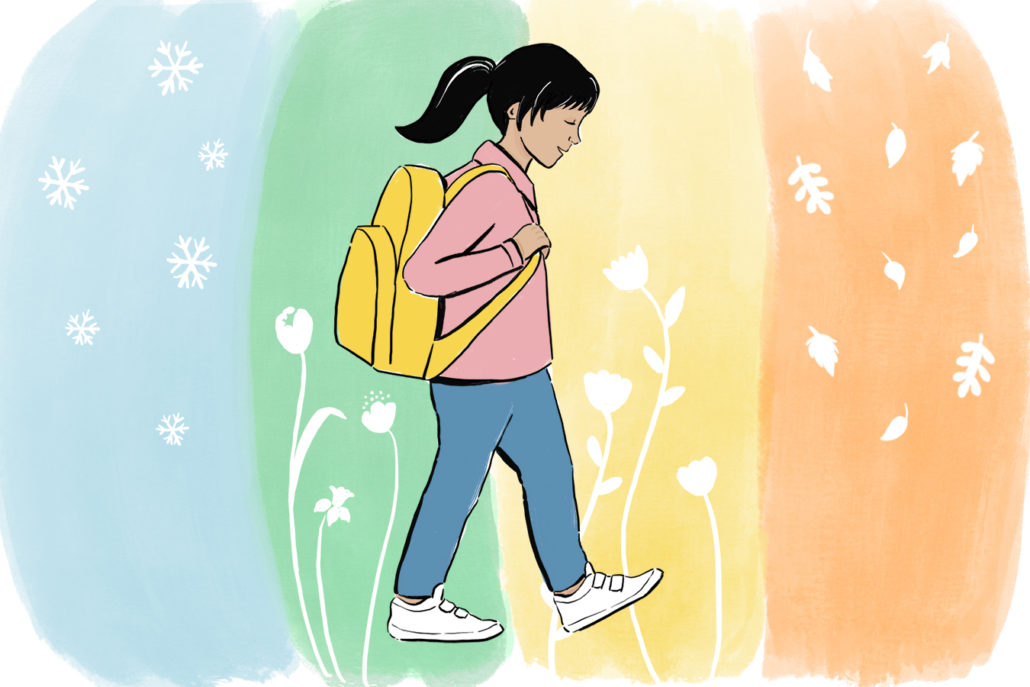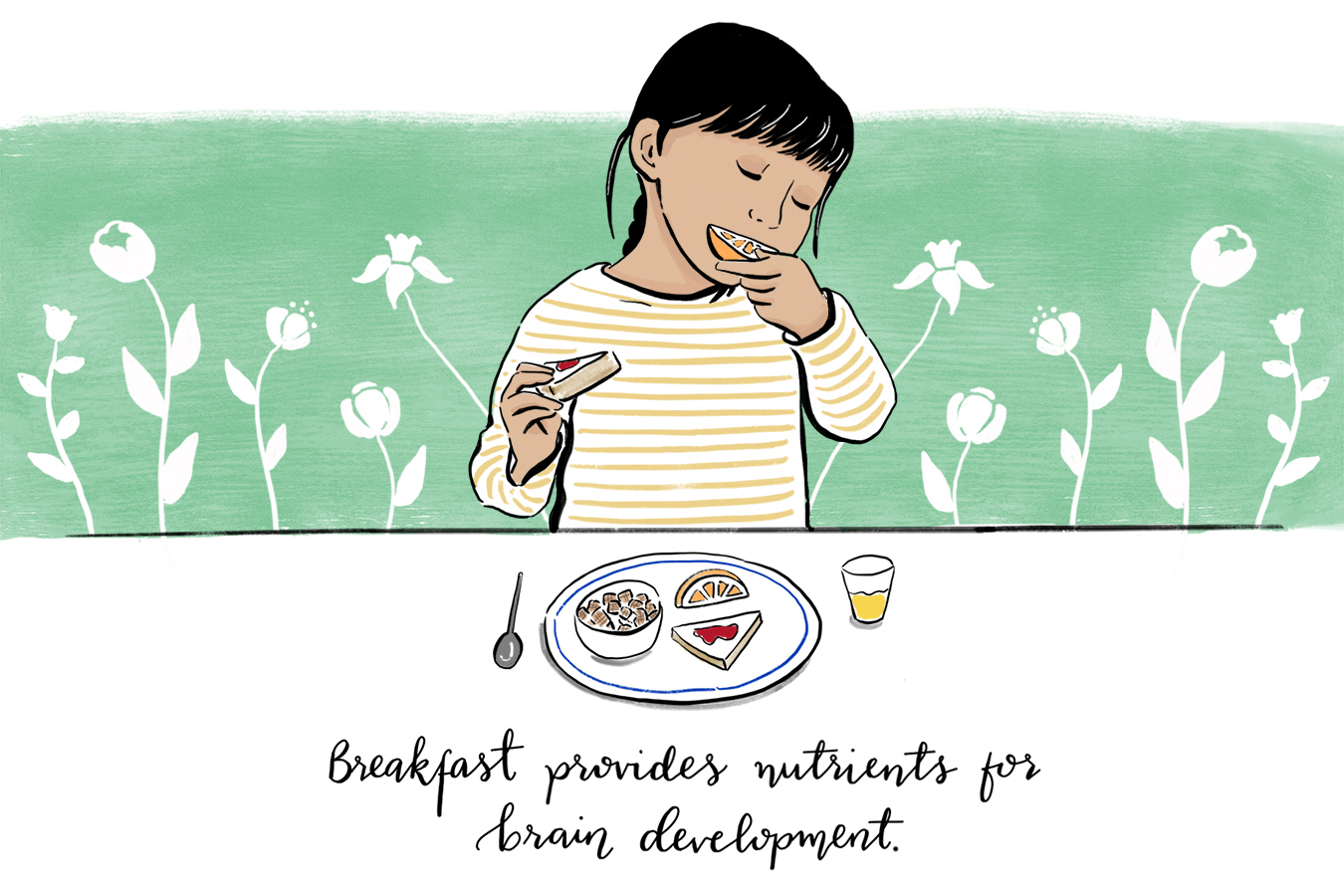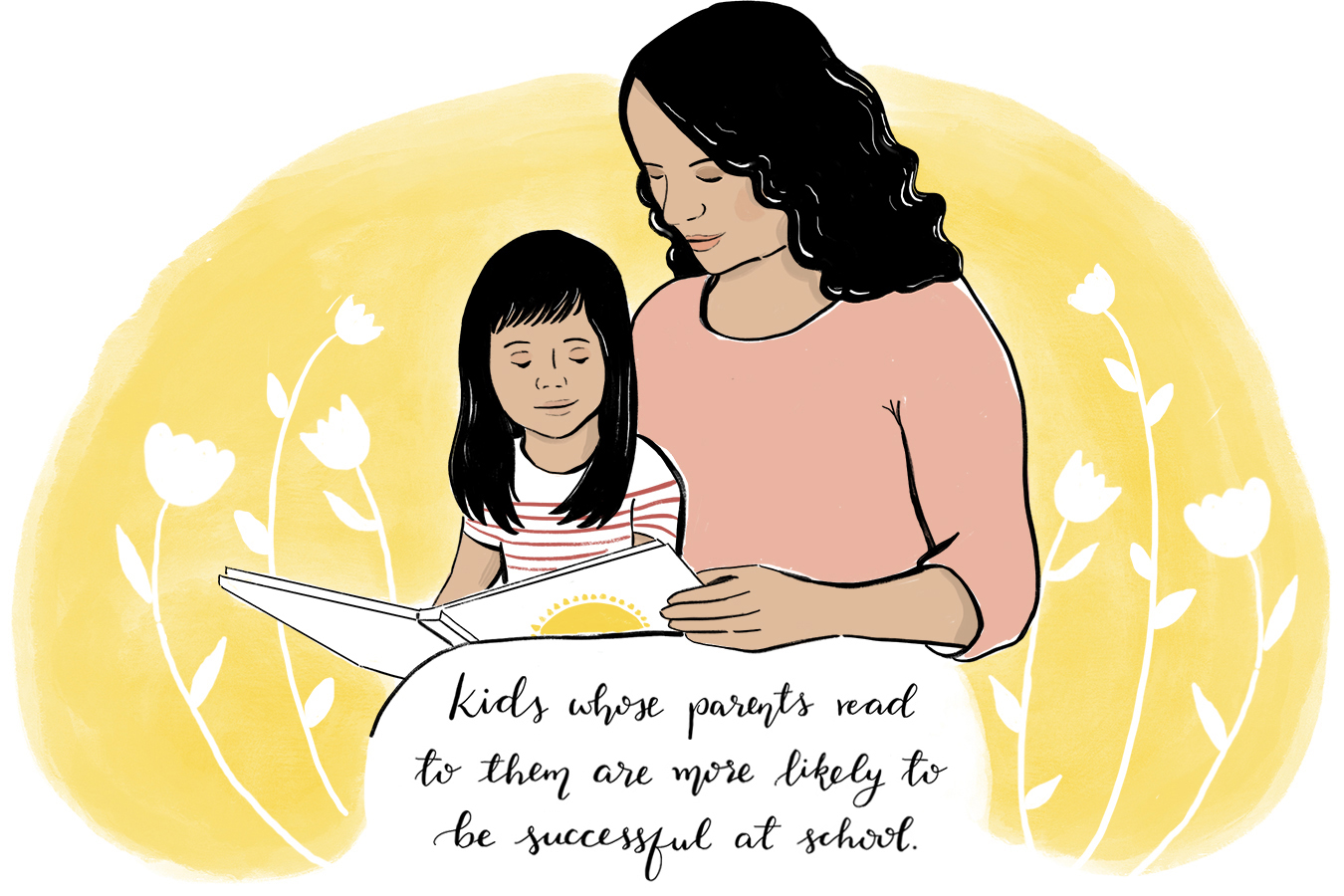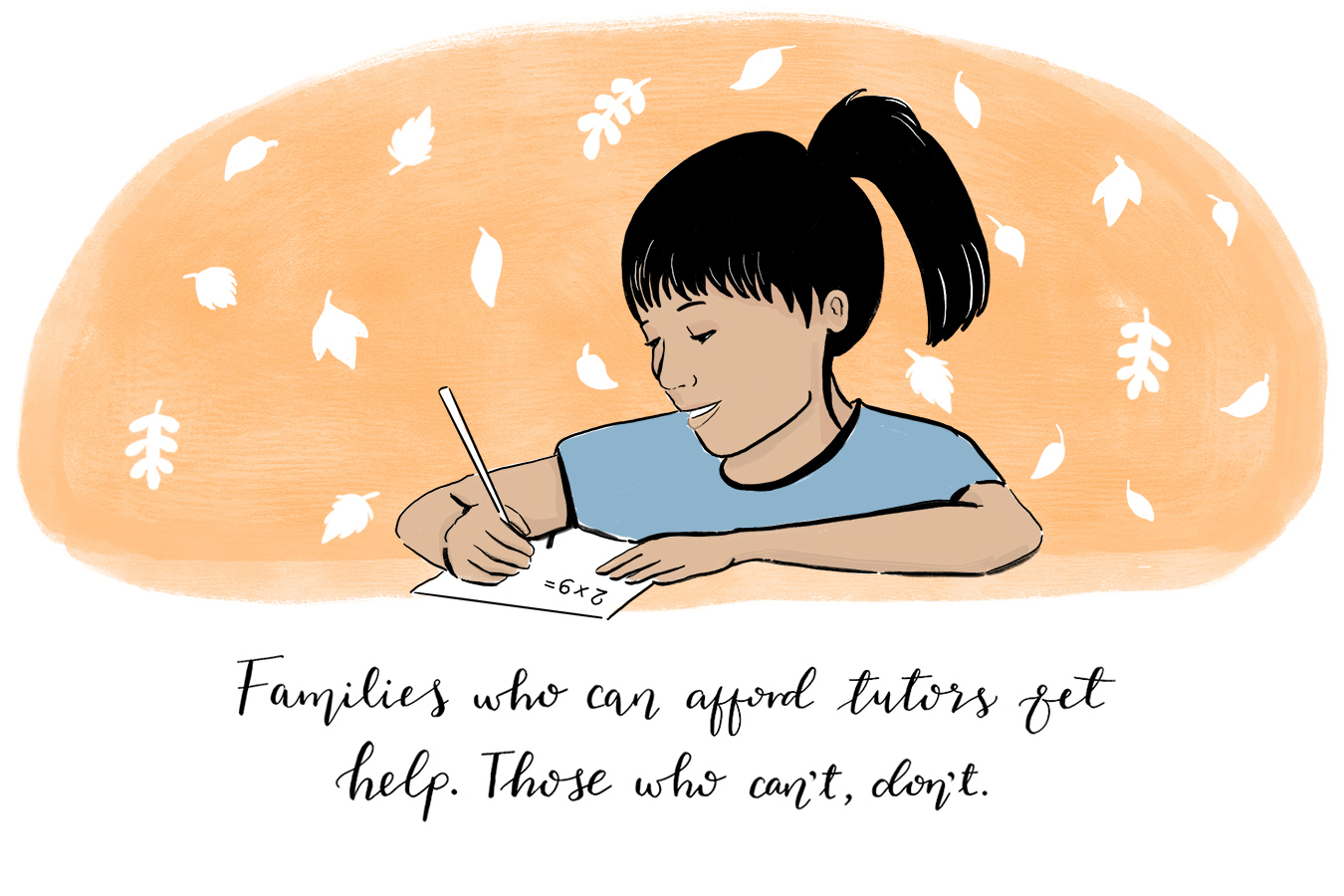
17 per cent of Canadian children are experiencing poverty right now—and they might feel the impact their entire lives
Poverty has serious repercussions for people of all ages. But for kids, it has particularly devastating effects. An alarming 17 per cent of Canadian children live in poverty, according to the 2016 census. In Toronto, the rate is even higher—in fact, it’s the child poverty capital of Canada. According to Unequal City: The Hidden Divide Among Toronto’s Children and Youth, a 2017 report from Social Planning Toronto, more than one in four children under the age of 18 live in poverty, making Toronto’s child and youth poverty rate the highest among major cities in Canada. Indigenous, newcomer and racialized children are more likely to be growing up in low-income households, creating an even wider gap in quality of life.
Research shows that poverty hurts children from the moment they enter the world—and the effects last well into their adulthood. In some cases, children are affected even before they’re born, as poverty-related stress can harm a mother’s pregnancy. From food insecurity, which hinders a child’s cognitive functioning, to under-housing, which negatively impacts long-term health, kids who experience a low-income are at a great disadvantage in life. Here’s how poverty affects children in the GTA all year long.

Winter clothing
Kids who come from lower-income households often don’t have adequate winter clothing. Warm clothes are a practical necessity, of course, but this is also a social problem. Kids without proper outerwear are less likely to be able to play outside and partake in winter activities—something that’s crucial to their development. What’s worse, says Dennis Raphael, a professor at York University’s School of Health Policy and Management, when kids can’t afford things others can, they’re stigmatized for it.
Raphael, who literally wrote the book on the long-term effects of poverty (Poverty in Canada: Implications for Health and Quality of Life), says that even when schools try to do the right thing by organizing clothing drives, they can accentuate social disparity between lower-income and more-affluent kids. “Other kids look down on them—you have all of that emotional stuff,” he says. “One study reported that at one school’s clothing drive, a kid said to another, ‘Oh, you’re wearing my old sneakers.’”
Dental care
A 2014 Toronto Public Health outreach initiative found that kids from lower-income households are less likely to receive quality dental care, and are more likely to have cavities and need root canals than kids from higher-income families.
Those findings are backed up by a 2013 report from the Canadian Paediatric Society, which found that dental disease disproportionately affects low-income families, Indigenous children, new immigrants and kids with special health needs. On top of having poorer oral health, the report states that these populations are also less likely to have dental insurance, and tend to have limited or no access to oral health care.
This is all despite Healthy Smiles Ontario, an initiative aimed to provide government-covered dental care to low-income kids. According to the Ontario Dental Association, there’s still a critical funding gap that leaves many behind. A June 2018 press release calling for “meaningful action” on funding public dental health programs from Ontario’s new premier noted that dentists in Ontario treat about 200,000 kids under Healthy Smiles Ontario—but there are 500,000 eligible children. This means that even with current government support, many low-income kids still aren’t receiving quality care.

Food insecurity
When children don’t have enough to eat, they are more likely to have difficulty focusing at school. But it gets worse: hunger can actually impair cognitive functioning and brain development. Sugary and refined foods that are low in nutritional value can also have a negative effect on a kid’s ability to learn. That’s one reason children who have access to nutritious (and often, more expensive) food typically do better academically. “Food insecurity can play into certain mental health disorders and developmental disorders,” says Dr. Sloane Freeman, a pediatrician at St. Michael’s Hospital and founder of the Model Schools Pediatric Health Initiative, an in-school healthcare program that works in low-income communities. “If you’re not nourished a certain way, you’re at risk for developmental problems in childhood.”
Food insecurity also puts kids at a higher risk for developing other health issues—like diabetes and cardiovascular disease—later in life. According to a 2017 report from the University of Toronto, people with lower incomes typically consume less produce than those in food-secure households. “It’s not a question of not knowing you should be eating fruits and vegetables; it’s not being able to afford the fruits and vegetables,” says Raphael. “With poverty, you live under conditions of material deprivation.”
Extracurricular activities
According to the Unequal City report, access to recreational opportunities is key for children’s development and well-being, and prepares them for success in school. But when kids can’t join in for financial reasons, they lose out. Data from the Toronto District School Board shows that 48 per cent of children in families with incomes below $30,000 do not regularly take part in extracurricular activities. This is a huge contrast with children in households with incomes of $100,000 or more, where only 7 per cent do not attend out-of-school sports or lessons.
“Typically, children in low-income [households] have fewer opportunities for enrichment,” says Anita Khanna, the director of Social Action and Community Building at Family Service Toronto. “Experiences like going to an arts-based day camp or on trips to the zoo or science centre help bring in-class learning to life. This is why programs that promote access to summer programs for children in all income groups are so vital.”
Educational opportunities
Findings from a 2013 Globe and Mail investigation showed that schools in affluent Toronto neighbourhoods had higher student literacy test scores and better educational resources than schools in lower-income areas. Not only do low-income kids tend to do worse on literacy tests, but research shows they’re less likely to succeed in the long term, too. One study published in the journal Paediatrics & Child Health revealed that kids from low-income households were less likely to graduate from high school and to attend university or college.
“In Canada, only 31 per cent of youth from the bottom income quartile attended post-secondary education compared with 50.2 per cent in the top income quartile,” the report found. “Once again, the evidence indicates that students from low-income families are disadvantaged right through the education system to postsecondary training.”
Childcare
There’s a link between childcare and school success. Quality childcare helps early childhood development and boosts success later in life: it provides a safe, educational environment that fosters cognitive development and prepares kids for school. While affordable childcare is important to families from all economic backgrounds, access to this service is not equal across income brackets: a 2018 report from People for Education found that elementary schools with a higher percentage of university-educated parents are more likely to offer childcare, whereas at schools with fewer university-educated parents and higher rates of poverty, subsidized or affordable childcare services are lacking.
When low-income children don’t have access to this vital service, they’re put at risk, says Khanna. “Unfortunately, affordable, accessible, high-quality childcare is still a matter of chance, as children linger on the subsidy waitlist when they could be gaining foundational skills through play-based learning,” she says.

Reading
There’s a strong correlation between socio-economic status and academic performance. That’s particularly evident when we’re looking at language development. A 2013 study by psychologists at Stanford University, for instance, showed that toddlers from low-income households knew fewer words and had weaker language processing skills than their more-affluent peers. They were also less likely to start school with early reading skills.
Another gap is in the simple—yet, for many, less achievable—act of reading aloud to and with kids. According to the Canadian Teachers’ Federation, kids who are regularly read to at home and have more positive parental interaction have higher levels of school readiness. But for a number of reasons, this tends to happen less often in lower-income households.
“Despite parents’ best efforts, the hunger, anxiety and social exclusion associated with poverty can have negative effects on children’s school readiness,” Khanna says. “Parents who have to juggle multiple low-wage or contract jobs may have less time to read to their children and build early literacy skills.” This barrier is even greater for new Canadian families if English is not their first language. Even if they’re able to spend time developing other skills with their children, English literacy is key to school success.
Kids from low-income households are also more likely to experience summer reading loss, a decline in literacy skills that can happen when children take a break from reading over summer vacation—and one that can have cumulative effects. “We all know that it is much harder to play catch-up when you start off on an unequal footing,” she says.
Swimming lessons
Knowing how to swim can save your life. Unfortunately, many low-income children aren’t enrolled in swimming lessons due to cost, much like other extra-curricular activities. When kids don’t learn to swim, they are literally more likely to die than those who can.
There are also cultural barriers that may prevent many low-income kids from learning how to swim—the need for gender-segregated lessons, for example. New Canadians are four times less likely to know how to swim than those born in Canada, and are therefore at a higher risk for drowning.

Learning difficulties and developmental issues
Kids from middle- to upper-class families usually get outside or additional assessments if they are struggling in school; kids from lower-income households often do not. “Extra help through a paid tutor is simply not an option for families struggling to pay the rent and put food on the table,” says Khanna. “This has short- and long-term effects on children’s school performance, confidence, self-worth and interest and engagement in school over their lifetime.”
And if a low-income child is suspected of having a developmental issue, there’s typically a lengthy public waitlist for an assessment, which is usually done over several visits to various specialists, says Freeman. This delay can have drastic consequences. “We know that when there’s untreated developmental disorders or developmental needs are not met, [kids] are at higher risk of things like substance abuse, and their educational achievements will be affected,” Freeman says. “Even employment opportunities will be different, and that will change the trajectory of a child’s life.”
Affordable housing
As housing costs increase, lower-income families are forced into enclaves where there are usually fewer recreational resources—or lower-quality resources—for kids. “Inadequate housing may be located in high-risk neighbourhoods which have less access to quality services, infrastructure and vibrant communities, compared to housing in more secure locations,” says a report by Best Start Resource Centre. “Welfare rates and Ontario Disability Support Program are not enough to meet basic needs, making it impossible for families to save for a house or to increase their standard of living.”
Plus, when families are underhoused, they are often subject to overcrowding, says professor Raphael. This means it’s not uncommon for two or three families to live in a single apartment. “From a health perspective, this can cause infections and stress.” And it’s not a short-term problem: “the waiting list is 18 years [for subsidized housing],” he says.
Healthcare
Children from lower-income households typically receive worse, and less frequent, medical attention than more-affluent kids do, which means they’re at a greater risk for physical and mental health problems. Plus, kids experiencing poverty are more likely to be hospitalized for acute conditions and are less likely to receive preventive care. According to Social Determinants of Health, a report co-authored by York University’s Raphael, the bottom 33 per cent of Canadian income earners are less likely to see a specialist when needed compared to the country’s top 33 per cent of earners.
“Poverty affects a number of the social determinants of health,” says Freeman. “There’s transportation barriers, financial barriers, parents have to take time off work to go see the doctor and there’s significant language barriers. There’s difficulty navigating our healthcare system in general. It’s more difficult than we may realize for families to access the care they need.”
Financial literacy
“Financial services are generally designed to cater to the needs of middle- and high-income individuals,” says a report by Prosper Canada. “This can result in financial information and advice that is unintentionally ill-suited or even harmful to people with low incomes.”
If a child comes from a family where there are financial barriers, like low levels of education or low-wage employment, they’re less likely to develop financial literacy as they grow up. Certain segments of the population that are more prone to poverty, including Indigenous people and new Canadians, are also less likely to learn how to make more informed financial choices. Things like applying for student loans and government grants, for example, are more challenging for kids whose parents don’t have the knowledge base.
It’s clear that poverty impacts the trajectory of a child’s entire life and accentuates the income gap across generations—which is why it’s important for society to do everything it can to counteract its effects. Advocating for change, getting involved in local politics, and volunteering in your community can help.
“All children should have the opportunity to reach their full potential and contribute to our communities,” says Khanna. “We all benefit from lower poverty and inequality, so we need to be fully invested in making positive change to improve the lives of children and families.”